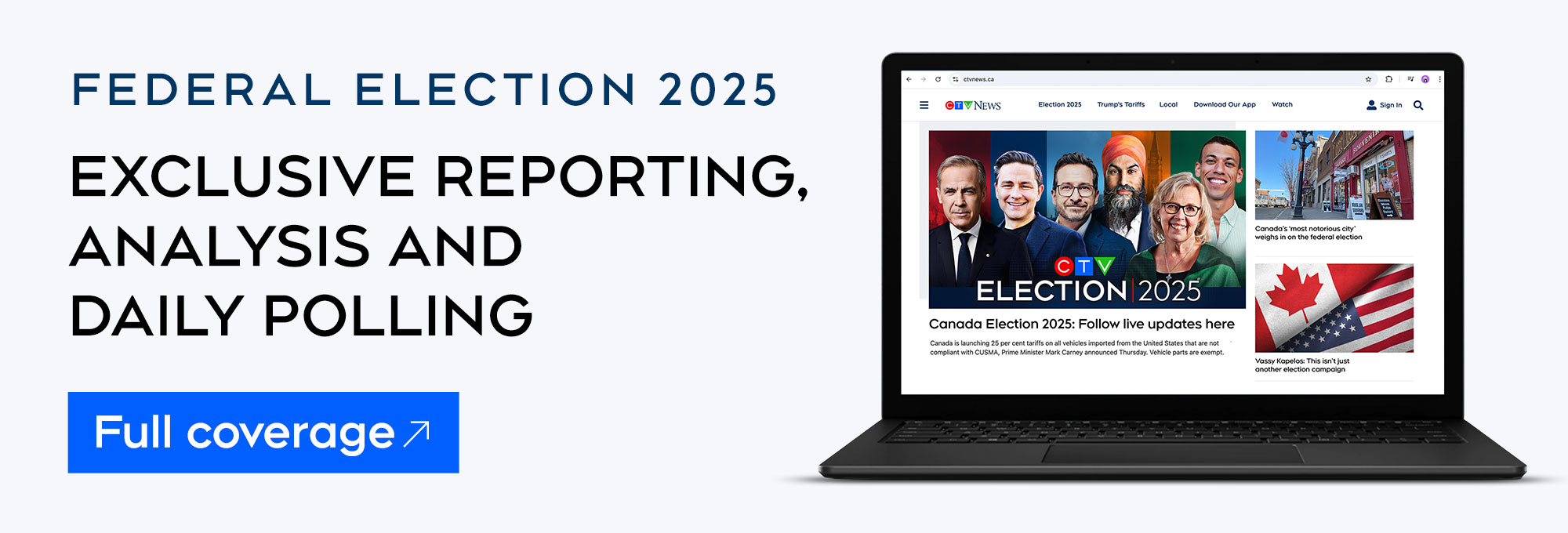Two months into a trade war between Canada and the United States, President Donald Trump is expected to launch more tariffs Wednesday – a day he calls “Liberation Day.”
The newest tariffs aren’t only aimed at Canada but are expected to hit multiple other countries as well.
On top of any “reciprocal” tariffs, it’s not clear whether a temporary pause on separate economywide duties on Canada and Mexico – 25 per cent across-the-board tariffs, with a lower 10 per cent levy on energy – will be lifted today as well.
President Trump said in early March that the pause would last until April 2.

While the specifics remain unclear until Trump announces his latest addition to the ongoing trade war, it seems certain many countries around the world, including Canada, are bracing for economic impact.
Bruce Winder, retail analyst and author of “Retail Before, During and After COVID-19,” says any tariffs have the potential to impact the average middle-class family, mainly due to inflation.
“As the U.S. puts tariffs on Canada, the Canadian government is going to put counter measures. They’ve already started counter measures on industries, on products coming into Canada. That’s going to breed inflation. We’re already seeing a bit of that because of the Canadian dollar weakening as well, that drives the price up on all imports,” said Winder during an interview on CTV Atlantic Morning Live Wednesday.
“And what could happen as a result is unfortunately, we could see some job loss as some industries slow down that are really affected that really sell a lot to the U.S. They could be impacted because their goods are more expensive.”
Winder says tariffs could also cause the interest rates to rise once again.
“As inflation rises, the Bank of Canada will try to use interest rates to try and calm inflation down,” he said.
Canadians are likely to see immediate impacts in some specific areas due to the tariffs – including fresh fruits and vegetables that have to be sourced from south of the border.
“Because the price increase will be impacted right away. Other retailers have sort of stocked up on inventory to try to sort of wait this out a little bit, but whatever is perishable, whatever has a short shelf life, you’ll start to see that right away if it’s sourced from the U.S.,” Winder said.
Those who shop online could also see prices go up due to tariffs. However, Winder says some companies – like Amazon – are creating their own showcase of Canadian items.
“If you look at Loblaws, they’ve come out recently – their CEO – and said that they’re making a conscious effort to try to buy Canadian more often, switch sources away from U.S. goods where possible,” Winder explains.
“They’ve put a maple leaf on the shelf, they’ve put a ‘T’ on the shelf that shows any products impacted by tariffs, and they’ve indicated whatever prices go up because of tariffs, they’re going to go right back down when the tariffs end.”
President Trump is expected to discuss his reciprocal tariff agenda at the White House around 5 p.m. AT Wednesday.







